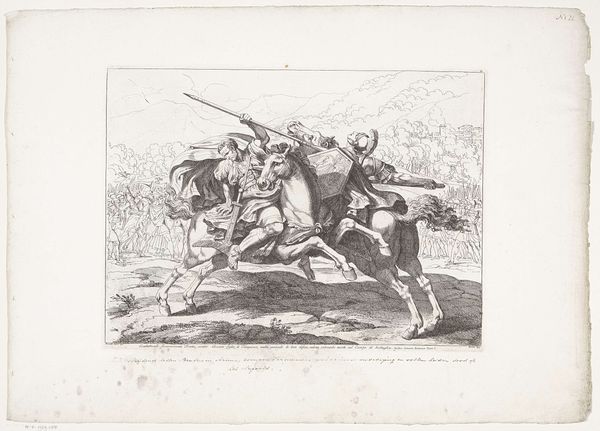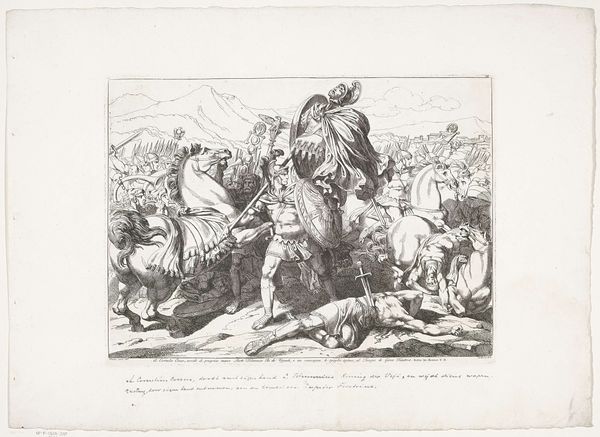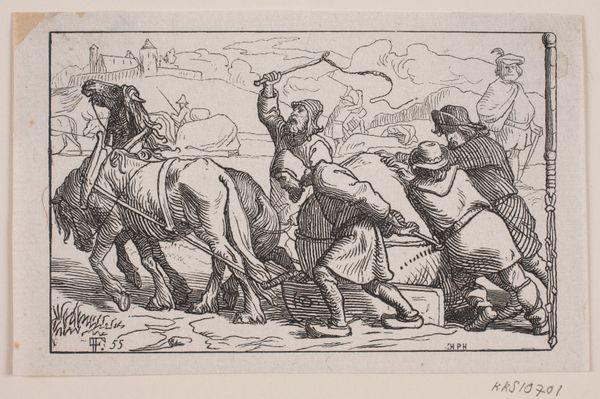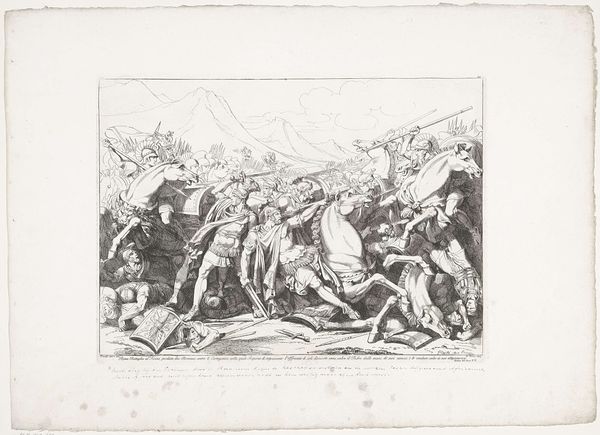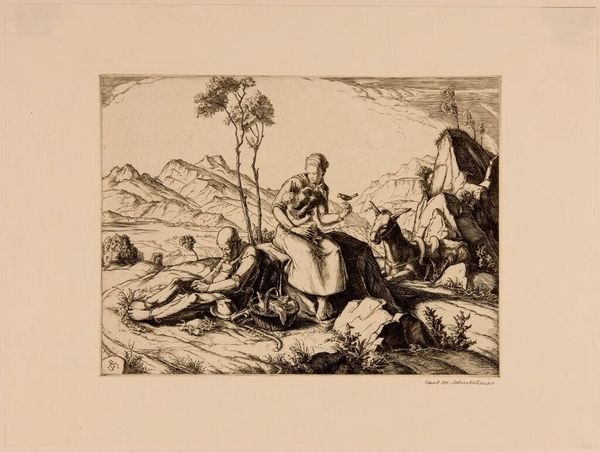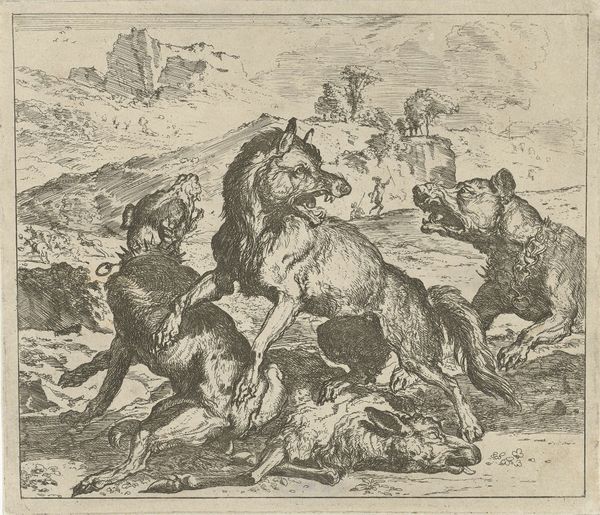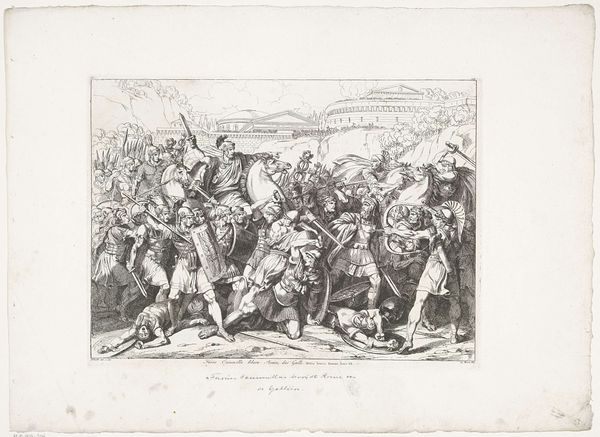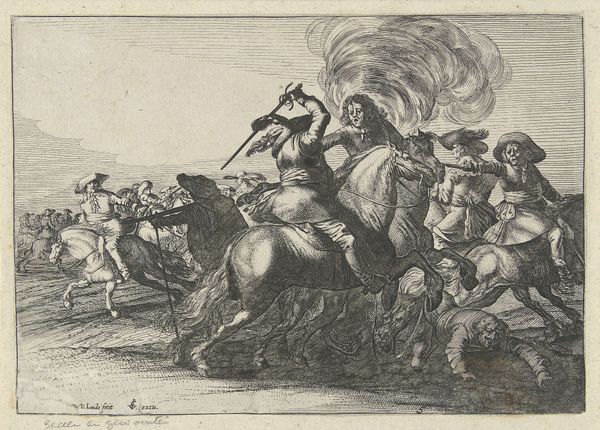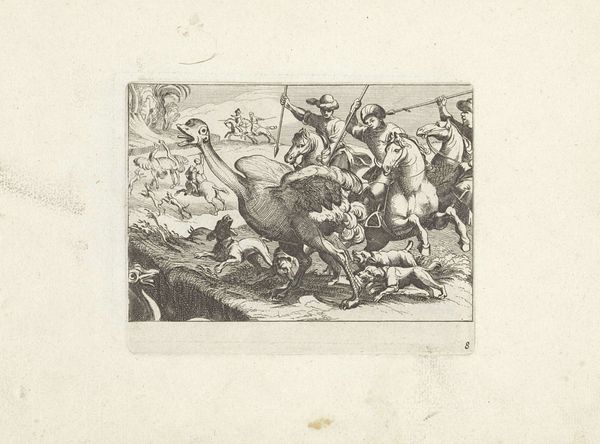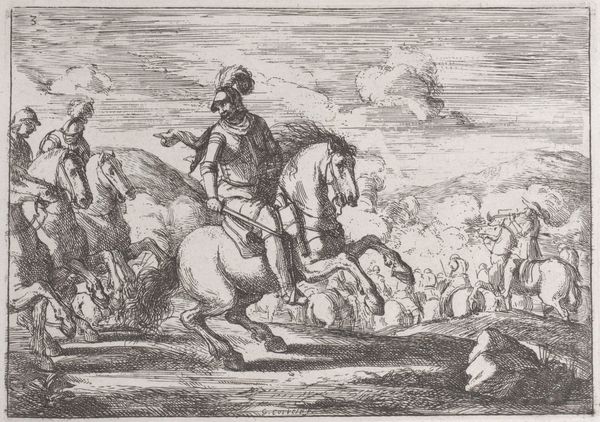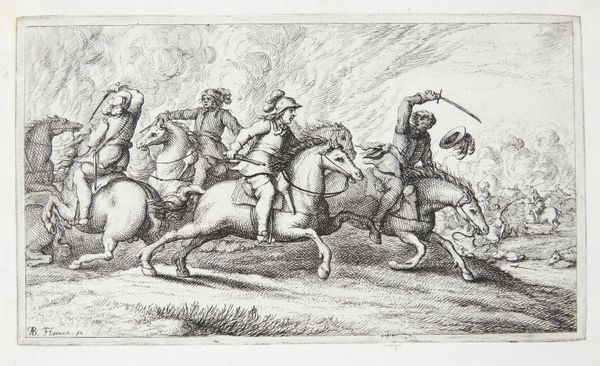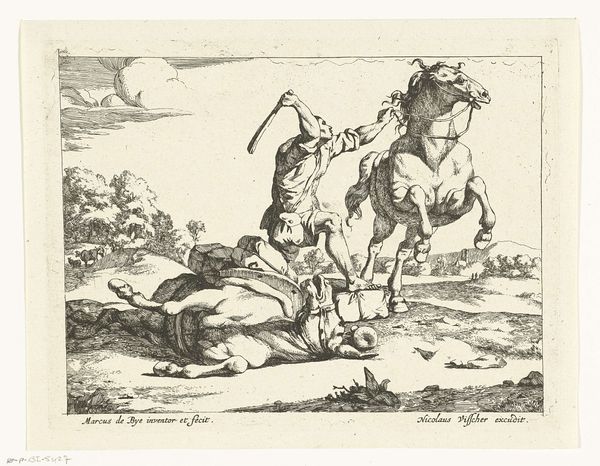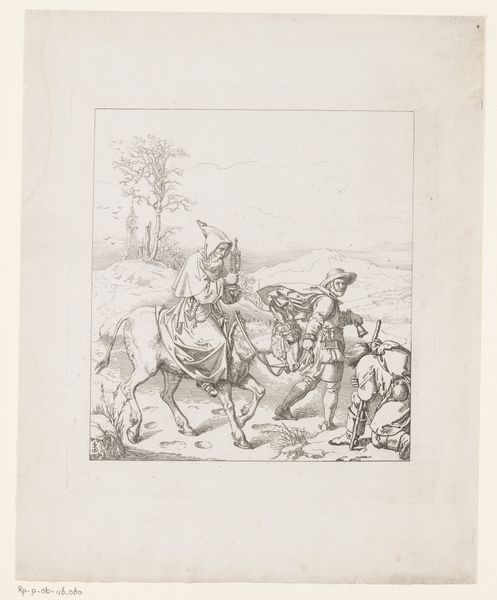
drawing, ink, pen
#
drawing
#
neoclacissism
#
pen sketch
#
pencil sketch
#
figuration
#
ink
#
pen work
#
pen
#
history-painting
Dimensions: height 315 mm, width 425 mm
Copyright: Rijks Museum: Open Domain
Editor: Here we have Bartolomeo Pinelli's 1817 pen and ink drawing, "Death of Lucius Aemilius Paulus I". The dramatic scene really captures a sense of chaotic defeat, but also an element of noble sacrifice, don't you think? How do you interpret this work in the context of Neoclassicism? Curator: It's definitely dramatic! The chaotic energy speaks to the realities of war, doesn’t it? But look at how Pinelli presents death. He emphasizes the idealized sacrifice of a leader amidst carnage. Neoclassicism in post-Napoleonic Europe grappled with the legacies of heroism and revolution. Do you see how the composition invites the viewer to contemplate civic virtue even amidst defeat? Editor: Yes, I see the central figure is presented almost heroically, despite the surrounding destruction. Does the drawing style – the pen and ink – influence how the subject matter is received? Curator: Absolutely. Pen and ink lend themselves to linearity and clarity. The deliberate draftsmanship invokes the art of antiquity, connecting contemporary audiences with their historical past and giving it authoritative visual language. How do you think the starkness contributes to its overall message about leadership and sacrifice in the early 19th century? Editor: The sharp lines and monochrome palette amplify the seriousness. It gives the scene a sense of gravity and finality fitting for such a subject. I hadn’t really thought about the art’s link to Neoclassicism before! Curator: Thinking about that political lens, the art reveals as much as it conceals. Examining art in this manner demonstrates that cultural interpretations depend greatly on one’s position and viewpoints. Editor: It is like a different story each time. Thank you, that was really enlightening.
Comments
No comments
Be the first to comment and join the conversation on the ultimate creative platform.
